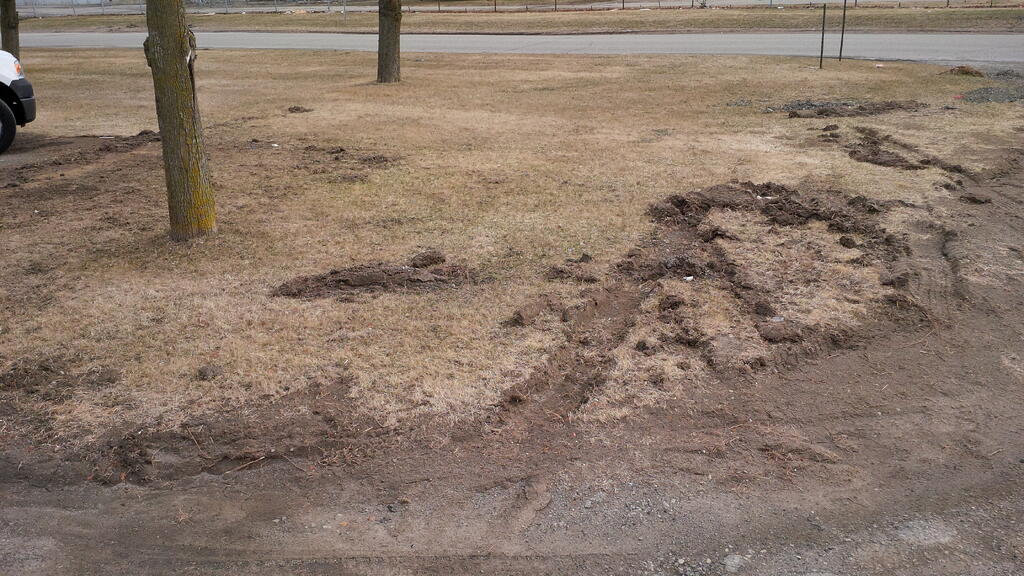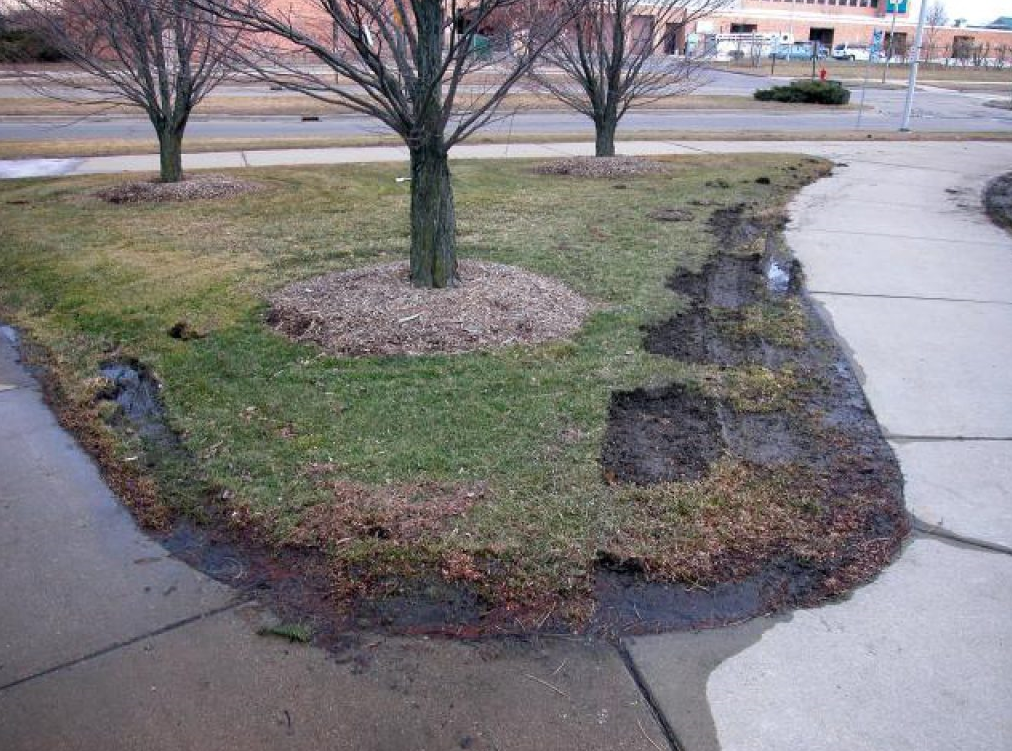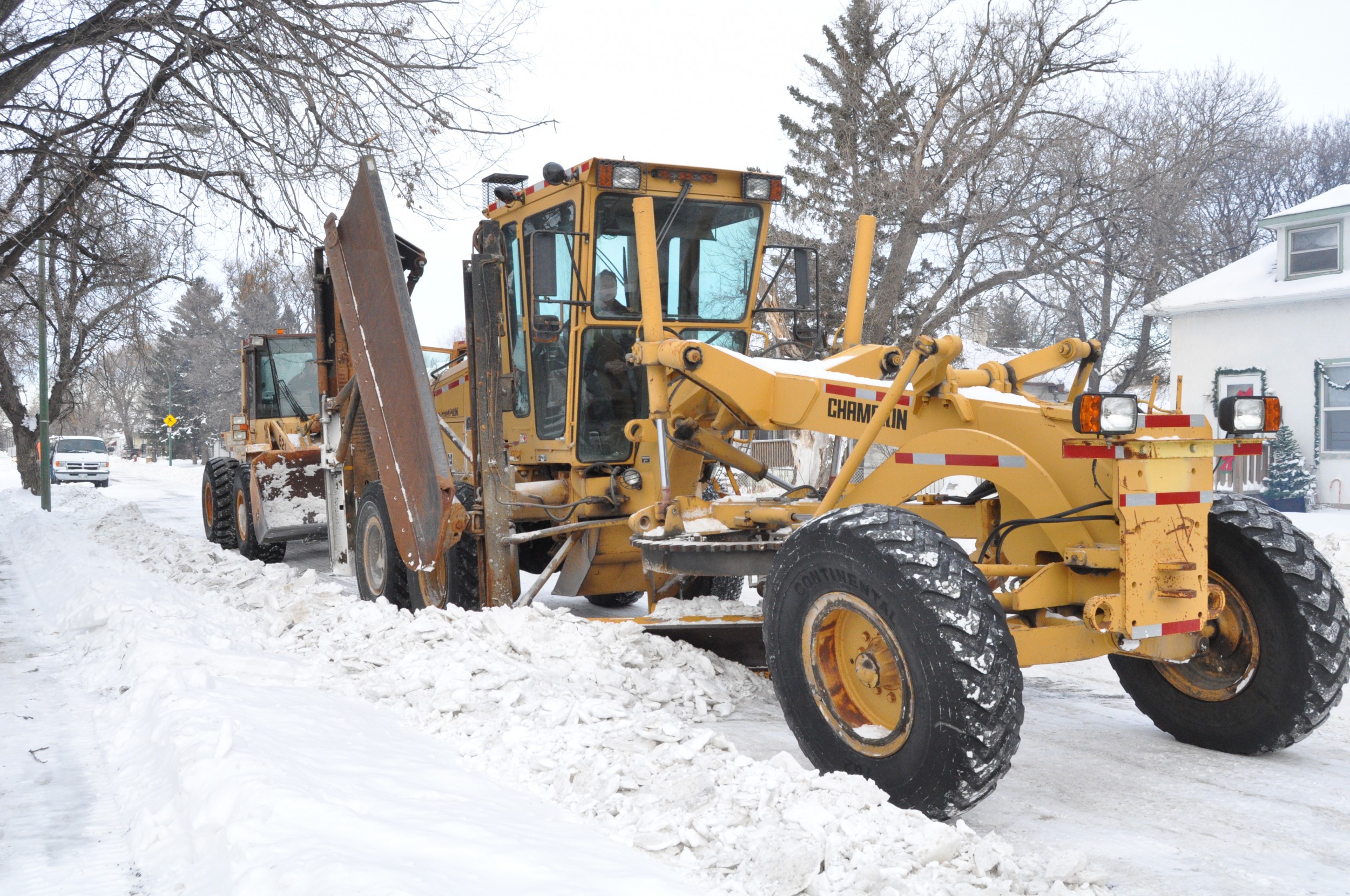
Mother Nature aside, some of the most severe damage that can take place to a lawn over the winter months is often the most preventable. Snow removal equipment that is used to plow, blow, and remove snow can easily, and unintentionally damage the turf when the boundaries aren’t properly identified. The edges from the road, driveway, sidewalk and along walkways are most vulnerable to damage.
Severe damage is caused when snow plow blades dig in along the edges causing it to lift, rip, tear, slice, thus removing sections of the turf completely. Unfortunately, this usually happens without even knowing it has happened being the lawn is covered in snow. Not until spring after the snow melts can you see the extent of the damage with sections missing and large chunks of sod piled up along the edges. Tire rutting from truck or tractor mounted plows can also create noticeable damage on the surface when they drive over the lawn.

To compound the damage, irrigation sprinkler heads are also often damaged too. Irrigation sprinklers are commonly installed along the edges making them very vulnerable to plow damage if they are not marked. The same can be said for landscape lighting systems that border edges and can easily be damaged from plowing.
The easiest way help avoid all of the above mentioned damage risks is to clearly identify the boundaries of lawn areas. Reflective snow plow markers and large bright stakes are recommended to help outline the edges, landscape and plant materials. These should be installed before the ground is frozen and before the first anticipated snowfall. Snow piles and banks can become high depending on the amount of snow so ideally these markers need to be tall enough so they too don’t get buried in the snow.

Depending on the extent of the damage a number of options can be used to repair. The most severe damaged sections missing chunks of sod may be repaired by piecing back together the removed pieces if they are still intact enough. Another option could be to re-sod these areas if the torn up sod is too badly damaged. For areas that only sustained minor damage, aggressive overseeding and topdressing practices can help re-establish turf.








